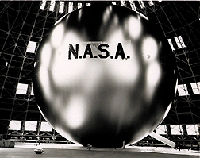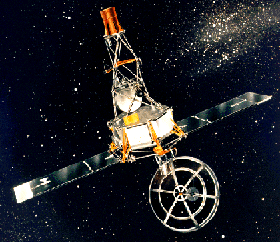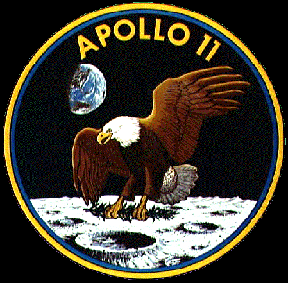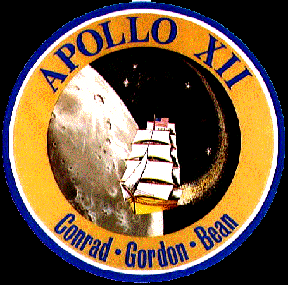
The History of Cosmic Ray Studies
1960 - 1969
- 1960

The first balloon-type satellite, Echo I, 30.5 m in diameter was launched by NASA.- 1960
- Explorer VII detected solar flares that were causing "extremely severe" magnetic disturbance of the Earth's atmosphere. They were later analyzed as the greatest burst of solar radiation in the satellite's 13 months of operation.
- 1960
- A team lead by Bruce Cork at Berkeley, California announced the
discovery of the antineutron
- 1961
- The first man, Russian astronaut Yuri Gargarin, went into space.
- 1961
- Scientists at the Volcano Ranch Array reported detection of a
cosmic ray air shower with a measured energy of 1020 eV
- 1961
- NASA began funding of balloons, launching services, and related expenses in connection with high-altitude measurements of electron, low-energy proton, and alpha-particle spectrum of primary cosmic radiation to be conducted by the University of Chicago from Uranium City, Saskatchewan, Canada.
- 1961
- Herbert Bridge, with Bruno Rossi and the MIT team, obtained more detailed observations with an elaborate trap on NASA's Explorer X, a spacecraft designed to explore the nightside tail of the magnetosphere which was often immersed in the solar wind.
- 1961
- NASA announced that Explorer XII had successfully completed its first orbit, radioing data on magnetic fields and solar radiation from an apogee of nearly 54,000 miles and perigee within 170 miles of the Earth.
- 1961
- The Navy Skylark balloon began a coast-to-coast flight carrying University of Chicago cosmic ray experiment. It was launched at Brawley, Calif., and landed near Asheville, N.C., on November 21.
- 1962
 Mariner II flew towards Venus, and not only detected a continuously flowing solar wind, but also observed in it fast and slow streams, approximately repeating at 27 day intervals, suggesting that their sources rotated with the Sun.
Mariner II flew towards Venus, and not only detected a continuously flowing solar wind, but also observed in it fast and slow streams, approximately repeating at 27 day intervals, suggesting that their sources rotated with the Sun.- 1964
- Murray Gell-Mann and George Zweig proposed the existence of the
quark
- 1965
- Antideuterons, nuclei of antimatter each composed of an antiproton
and an antineutron, were produced by CERN and Brookhaven National
Laboratory
- 1966
- Kenneth Greisen, Georgi Zatsepin, and Vadem Kuzmin calculated the
so-called GZK cut-off, the theoretical upper limit on the energy in a cosmic
ray from distant sources, due to its interaction with the cosmic
microwave background radiation along the path
- July 1969
 An Apollo 11 experiment studied the elemental and isotopic composition of selected elements in the solar wind by measuring particles trapped on an exposed aluminum foil sheet on the moon. The experiment was deployed by the astronauts, and the foil was brought back with them to Earth for analysis. Since the moon has no magnetic field, is outside the influence of Earth's magnetic field, and has no atmosphere to interact with the solar wind, the foils received a constant bombardment of particles.
An Apollo 11 experiment studied the elemental and isotopic composition of selected elements in the solar wind by measuring particles trapped on an exposed aluminum foil sheet on the moon. The experiment was deployed by the astronauts, and the foil was brought back with them to Earth for analysis. Since the moon has no magnetic field, is outside the influence of Earth's magnetic field, and has no atmosphere to interact with the solar wind, the foils received a constant bombardment of particles.- November 1969
 Apollo 12 carried a solar wind spectrometer package which was left on the lunar surface. The instrument was used to observe the directional intensities of the electron and positive ion components of the solar wind and magnetotail plasma that strike the surface of the moon.
Apollo 12 carried a solar wind spectrometer package which was left on the lunar surface. The instrument was used to observe the directional intensities of the electron and positive ion components of the solar wind and magnetotail plasma that strike the surface of the moon.
Back to main history page






Click on images above to
learn more about them
A service of the Heliophysics
Science Division at NASA's GSFC
Questions and comments to: cosmicopia@cosmicra.gsfc.nasa.gov
Curator: Dr Eric R. Christian, NASA
Responsible NASA Official: Dr Eric R. Christian
Privacy Policy and Important Notices
Questions and comments to: cosmicopia@cosmicra.gsfc.nasa.gov
Curator: Dr Eric R. Christian, NASA
Responsible NASA Official: Dr Eric R. Christian
Privacy Policy and Important Notices

HOME
In the News
History
Ask Us
Great Links
Glossary
Site Map
Search NASA